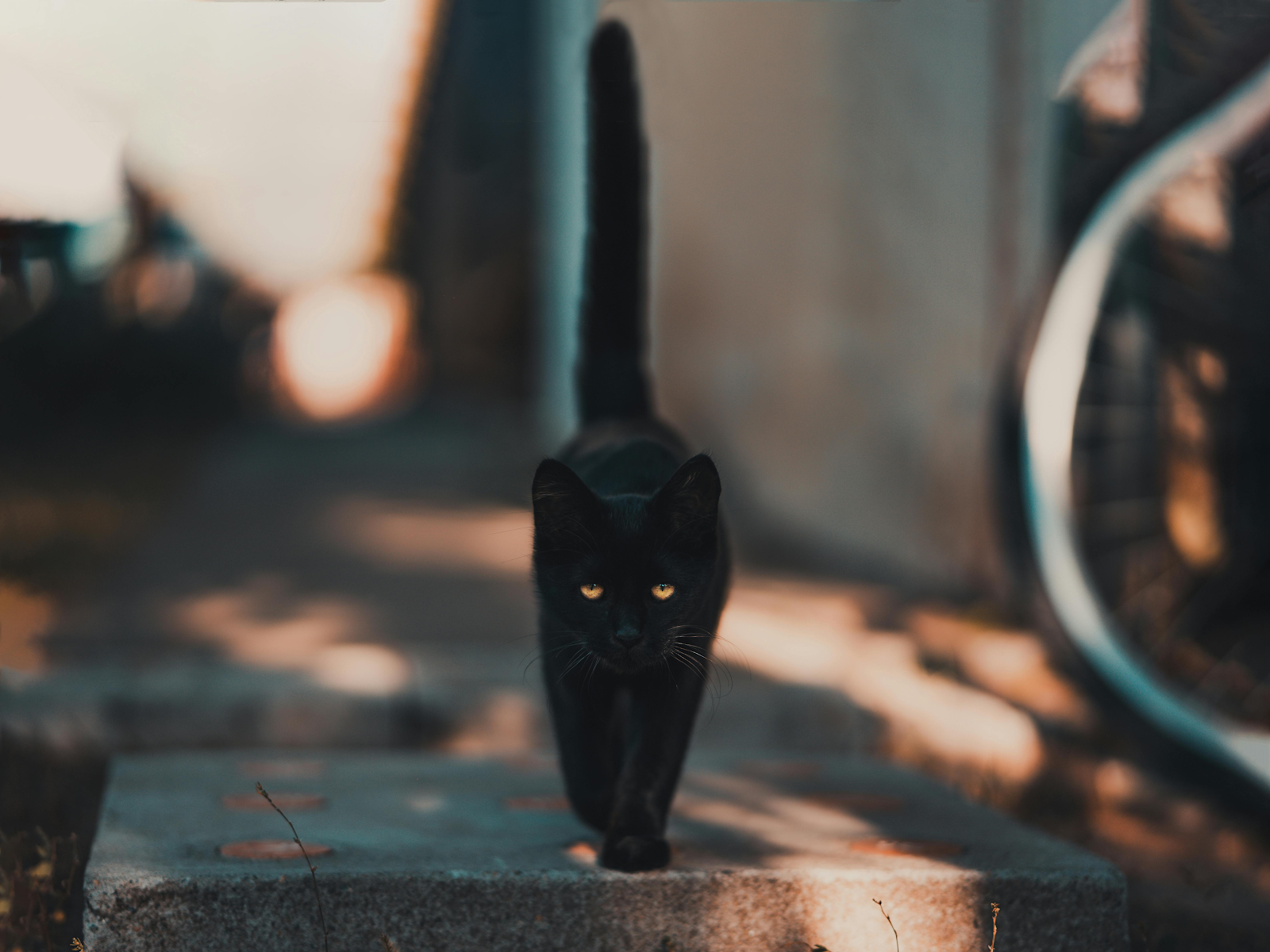The number 13: In Christian and Norse traditions, the 13th guest at a table brings down the whole group.
Spilling salt/Throwing salt: Salt has traditionally been thought to carry spiritual energy. Salt used to be so valuable that it could be used as currency, so wasting salt has been seen as a sin. Spilling such a valuable mineral was an invitation for chaos. Throwing it over your left shoulder was thought to undo the bad luck and was sometimes viewed as being able to blind the devil.
Black cats: Black cats that crossed your path were seen as unlucky because of their associations with being a witch's familiar and therefore evil.
Rabbit's foot: In European and African traditions body parts took on powerful symbolism. The Europeans believed witches could transform into animals (including rabbits) and a rabbit's foot would represent a dead witch. There was also a more taboo method of using human body parts as talismans. By using a rabbit's foot with dirt from a sinner's grave (or killed on a sinner's grave) instead, the talisman could have similar power without hurting any humans. It was believed that evil objects would scare evil away. In all of these cases, the rabbit's foot takes on or embodies evil energy that then becomes seen as lucky due to its power to scare away evil.
Breaking a mirror: In the American South, it was believed that mirrors did more than reflect your image. They were also seen as capturing a piece of your soul. When someone died they would cover the mirror to ensure that their soul wasn't trapped inside. When you break a mirror it's more than creating a mess, it's seen as rupturing a piece of your very soul, and a bad omen for the future.





It is interesting how the rabbit's foot harbors evil energy; however, that same energy becomes useful and controlled in repelling other negative energies.
ReplyDeletePersonally, I’ve always been intrigued by the psychological and cultural significance of these superstitions. While I don’t strictly adhere to them, I do find myself occasionally influenced by them—like avoiding walking under ladders or feeling a bit uneasy when a black cat crosses my path. It’s not necessarily that I believe in the supernatural implications, but rather that these rituals and beliefs have been ingrained in our collective consciousness to the point where they sometimes feel instinctively compelling. Your point about superstitions serving as a way to soothe anxiety is spot on. There’s something almost comforting about having these small, manageable rituals that offer a sense of control or protection, even if they’re based on outdated beliefs. It’s a testament to the human desire for reassurance and structure, especially when facing the unknown.
ReplyDelete